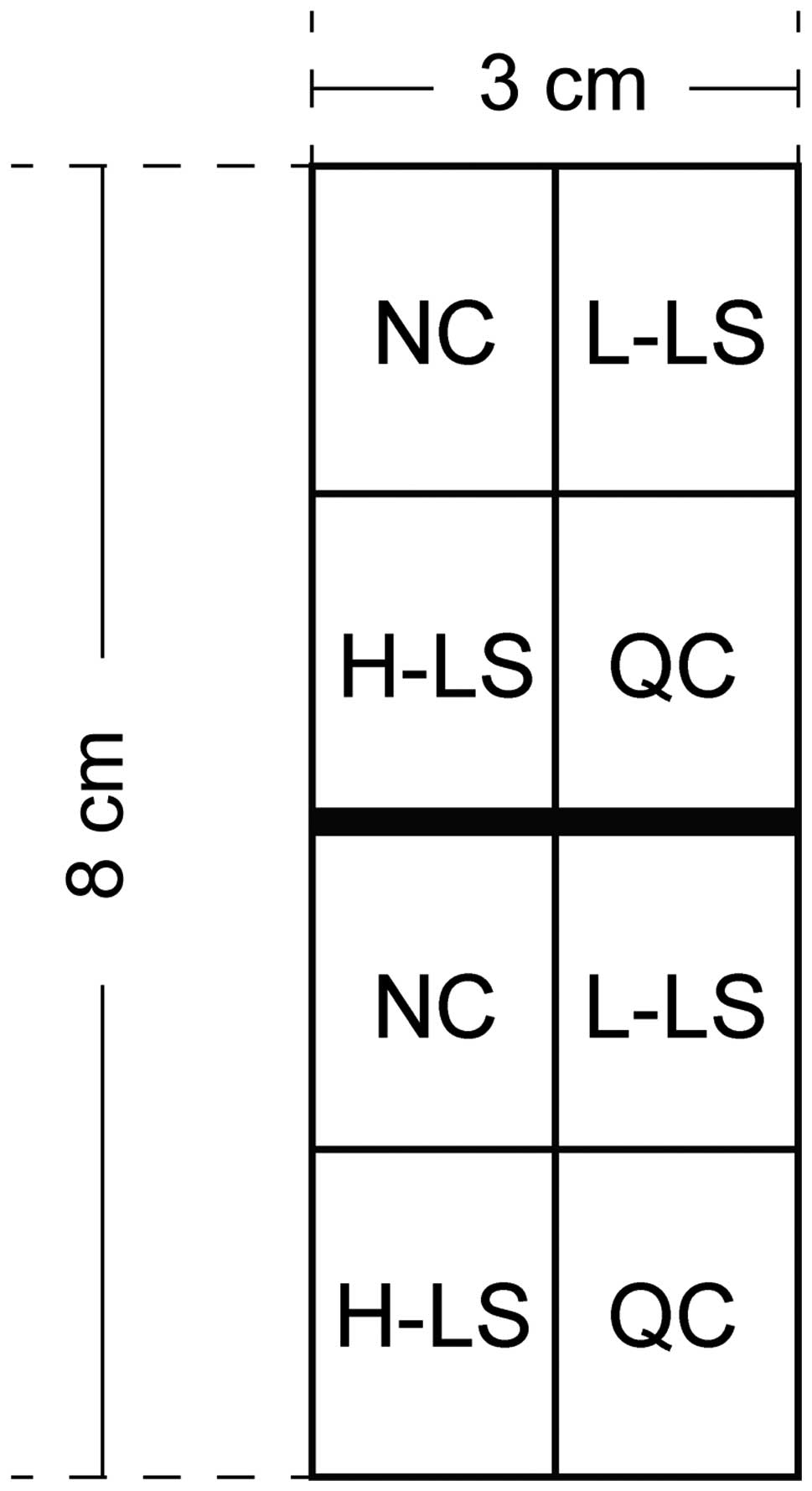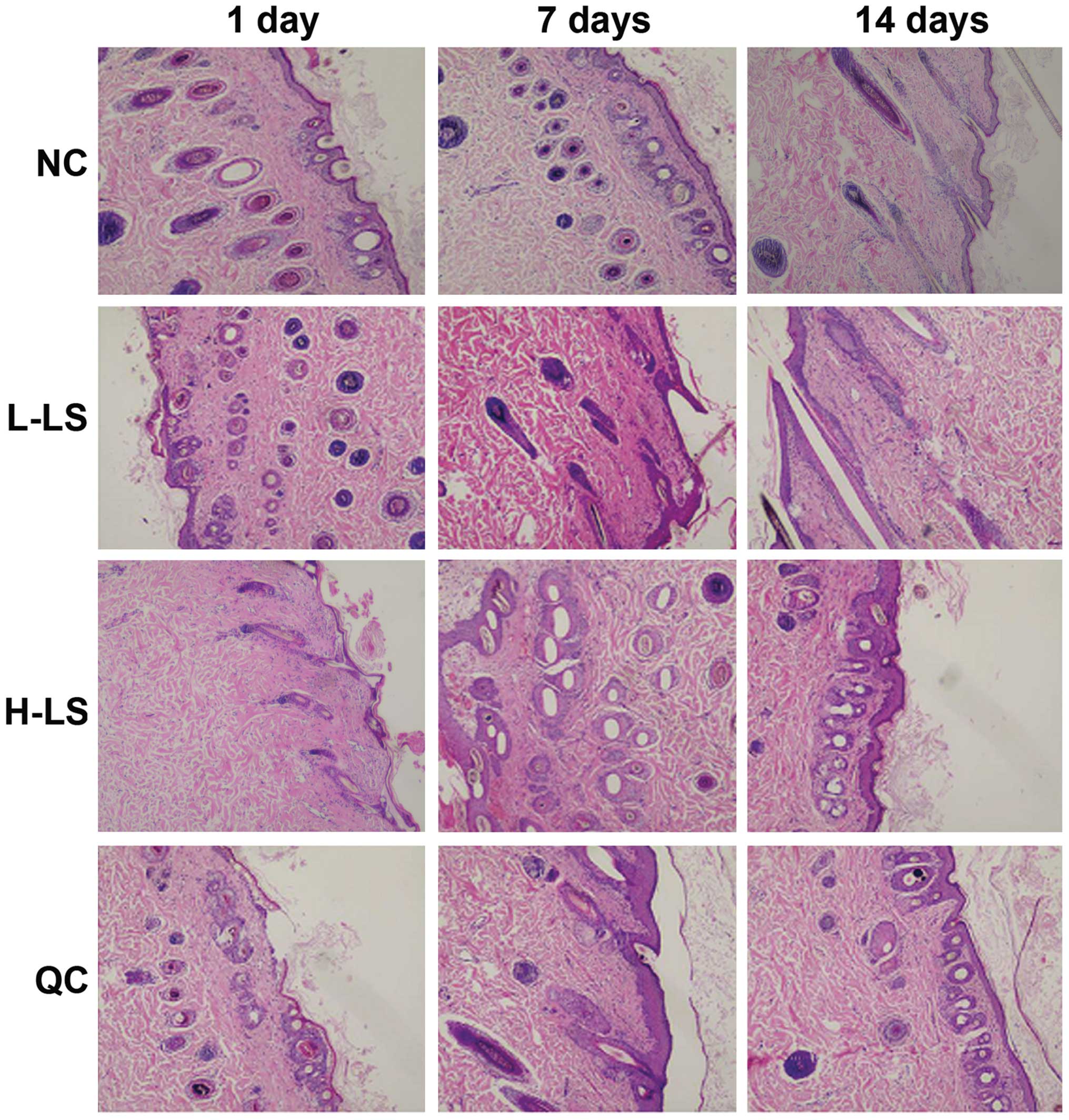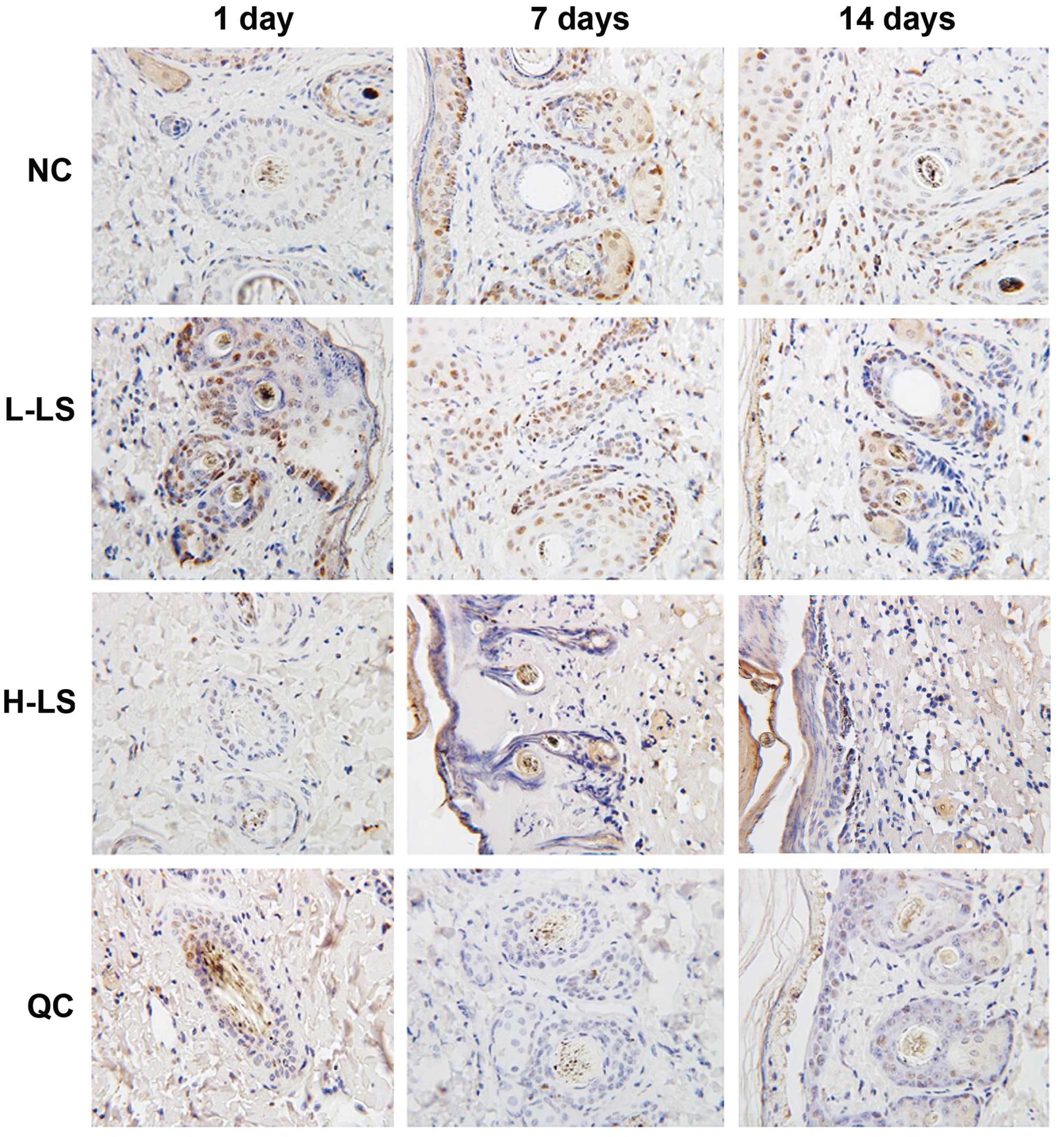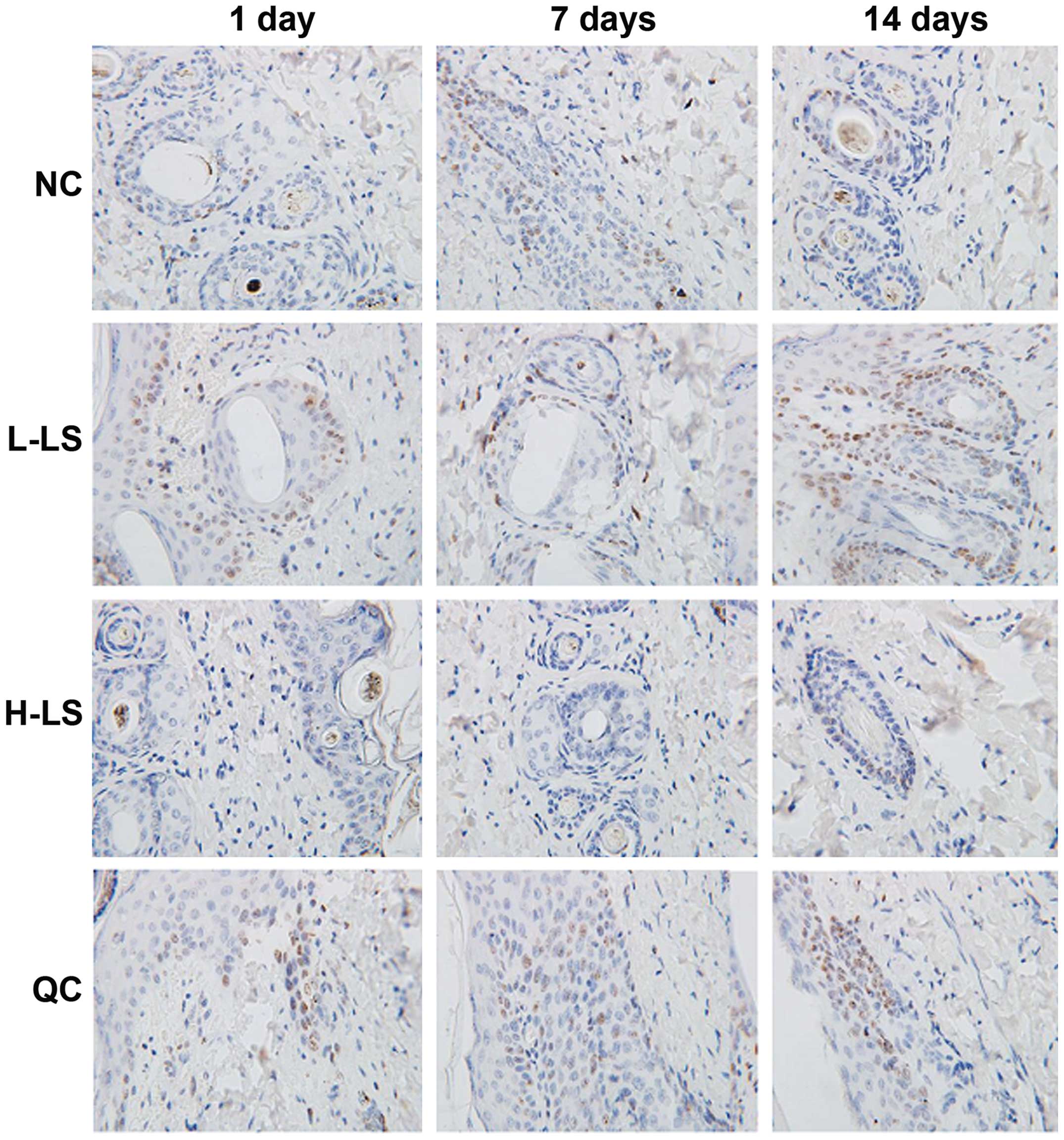Fundamental research on the action mechanism of the 800 nm semiconductor laser on skin blackheads and coarse pores
Retraction in: /10.3892/etm.2024.12709
- Authors:
- Published online on: November 30, 2016 https://doi.org/10.3892/etm.2016.3937
- Pages: 235-241
-
Copyright: © Lin et al. This is an open access article distributed under the terms of Creative Commons Attribution License.
Metrics: Total
Views: 0 (Spandidos Publications: | PMC Statistics: )
Total PDF Downloads: 0 (Spandidos Publications: | PMC Statistics: )
Abstract
The aim of the study was to determine the mechanism of action of the 800 nm semiconductor laser on skin blackheads and coarse pores. A total of 24 healthy purebred short-haired male guinea pigs, weighing 350-400 g, were selected and smeared with 0.5 ml coal tar suspension evenly by injector once daily. Treatment was continued for 14 days to form an experimental area of 8x3 cm on the back of the guinea pigs. The animals were divided into the following groups: Normal control group (NC), low-dose laser treatment group (L-LS), high-dose laser treatment group (H-LS), and Q-switched Nd:YAG treatment group (QC). Samples were extracted 1, 7 and 14 days after surgery and hematoxylin and eosin staining was used to identify the following: Epidermis, dermis, sebaceous gland change and hair follicle damage; the expression of proliferating cell nuclear antigen (PCNA) of sebaceous gland cells using immunohistochemistry; sebaceous gland cell apoptosis using TUNEL; and the protein expression of caspase-3, Bax and Bcl-2 using western blot analysis. With the extension of time, we observed inflammatory cell infiltration, an increase in hair follicle distortion and necrosis of the surrounding hair follicles. The expression levels of PCNA of the L-LS, H-LS and QC groups decreased with time. Regarding the respective time points, the NC group was highest, the L-LS and H-LS groups were next highest and the H-LS group was lowest. The difference was statistically significant (P<0.05). The apoptotic rate of the L-LS, H-LS and QC groups increased with time. With regard to the respective time points, the NC group was lowest, the L-LS and QC groups were next lowest and the H-LS group was highest. The difference was statistically significant (P<0.05). The protein expression of caspase-3, Bax and Bcl-2 of the L-LS, H-LS and QC groups increased with time. Regarding the respective time points, caspase-3 and Bax protein expression of the NC group was lowest, the L-LS and QC groups were next lowest and the H-LS group was highest. Bcl-2 protein expression of the NC group was highest, protein expression of the NC group was next highest and the H-LS group was lowest. The difference was statistically significant (P<0.05). In conclusion, the low-dose 800 nm semiconductor laser is an effective treatment on skin blackheads and coarse pores, and promotes hair follicle cell apoptosis without reducing the expression of PCNA.














